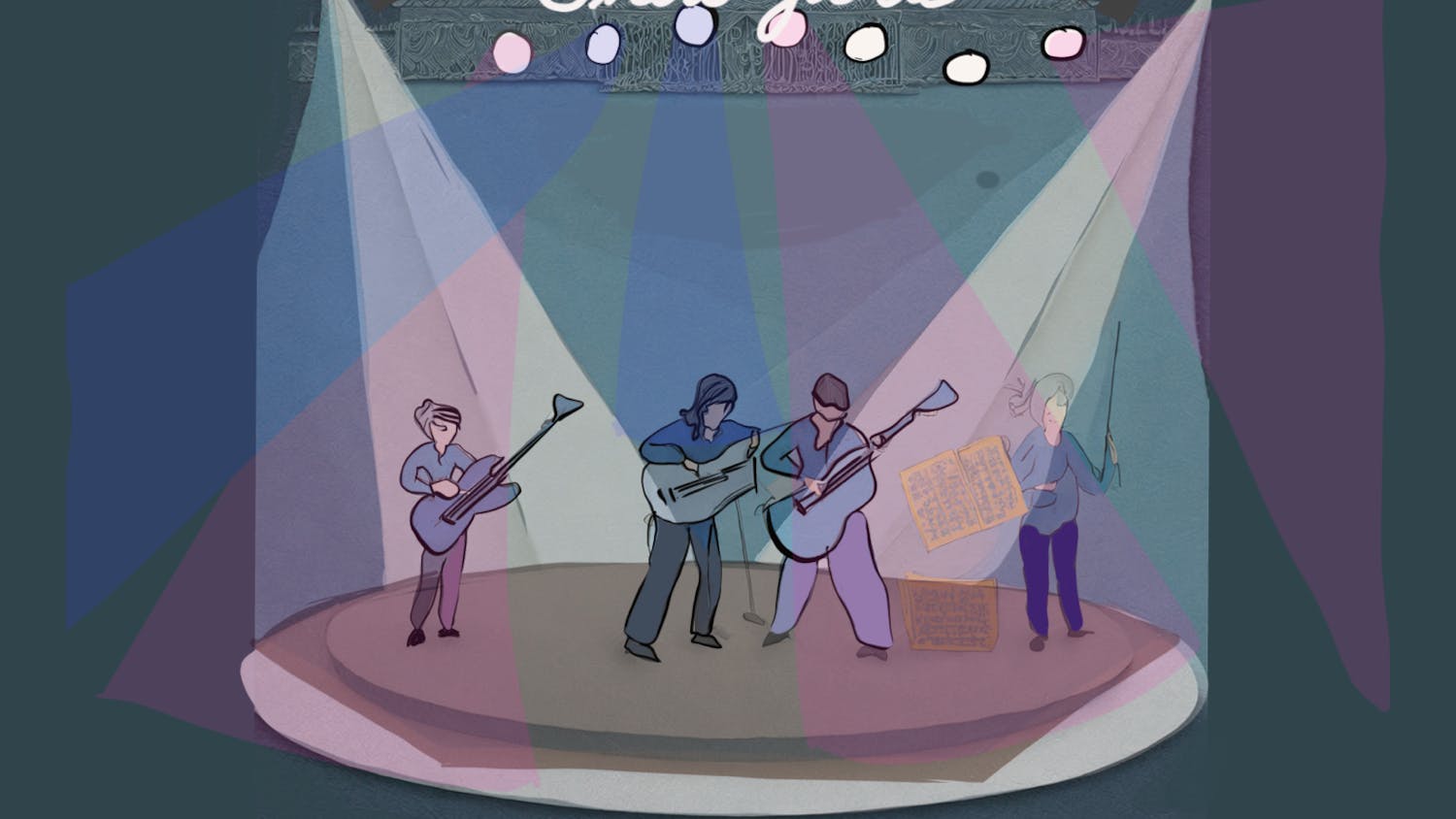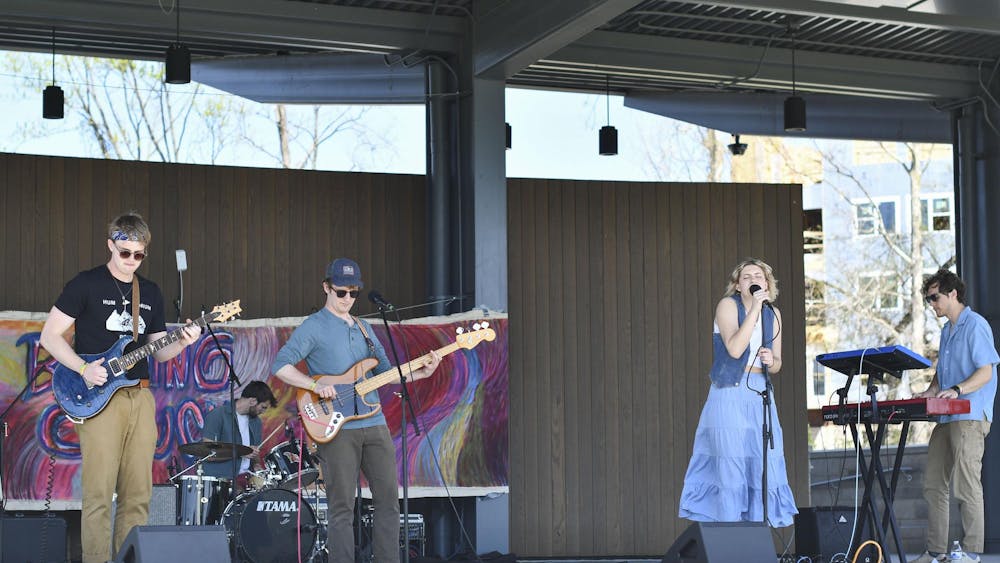More than 60 years ago, dance legend Martha Graham created the perfect role for herself.
Now, sophomore Carly Hammond in the Jacobs School of Music ballet department will dance that role, the bride in “Appalachian Spring.”
The iconic piece is one of three American ballets that will be part of the fall ballet program “Light and Shade.”
The department’s 2012-13 ballet theater season will open at 8 p.m. Friday at the Musical Arts Center after a 7 p.m. pre-concert talk. The second performance will be 8 p.m. Saturday.
“Sweet Fields,” created by American choreographer and dancer Twyla Tharp, will open the show with a live choral performance of hymns by William Billings.
Second in the lineup is Peter Martin’s “Eight Easy Pieces” and “Eight More,” danced playfully to piano and orchestra score of Igor Stravinsky.
Zippora Karz, a former New York City Ballet soloist ballerina, stage directed the piece.
Closing the night is “Appalachian Spring,” the oldest yet most stylistically modern ballet of the program.
American composer Aaron Copeland wrote the score for Graham.
At age 54, Graham — who died at age 96 in 1991 — played the role of the bride.
The eight-dancer piece is set in 19th century Pennsylvania, where a newlywed couple, a neighbor, a revivalist preacher and his followers celebrate spring after the building of a new farmhouse.
After receiving the role for one of the preacher’s followers, Hammond was asked to play the bride by stage director Denise Vale.
Vale once performed as a pioneer in the ballet and is senior artistic associate at the Martha Graham Dance Company in New York.
“I was really happy,” Hammond said. “I was really shocked. I didn’t expect to be getting such a big role in fall ballet because it can be really competitive because there are so many girls, and so many talented girls, I’d say.”
Vale came to Bloomington four weeks ago. Since then, rehearsal has been non-stop for Hammond, who practiced a full dress rehearsal Wednesday evening.
Hammond said the dance techniques for “Appalachian Spring,” which are named for Graham, proved particularly challenging.
Graham, considered the mother of modern dance, deviated from classical ballet with specific body movements such as the contraction, release and spiral.
The moves continue to have a profound influence on modern dance today.
“It’s more earthy and more internal,” Hammond said. “We have more contact with the floor. We’re actually rolling on the ground. That doesn’t really happen in ballet. It uses a lot of different muscles.”
Alexander Brady, stage director for “Sweet Fields,” attended the School of American Ballet and has worked closely with Tharp. He staged “Sweet Fields” at the American Dance Festival in 2011.
Michael Vernon, chair of the ballet department, continues to teach classes at New York-based Steps. He worked with dancers from the New York City Ballet and the American Ballet Theatre.
Vernon emphasized the importance of the dancers being able to work with choreographers who worked with the original creators and who know “the true intent of the choreography.”
“We’re having a woman who danced the role when Martha Graham was still alive, one of the principle roles, so she gives them what Martha Graham wanted her to say,” Vernon said. “And the same with Twyla Tharp. We have someone who worked with Twyla Tharp very closely. Someone who knows exactly Twyla style and what she wants.”
Although “Sweet Fields” showed at IU in 2008, the combination of the three all-American pieces makes this fall program particularly special, said Vernon, and no ballet program will ever be repeated.
“It’s like a journey from one dance to another,” he said.
Hammond said she and the dancers were at first intimidated by Graham’s presence. However, the role has enabled Hammond to work closely with Graham, who she now considers a coach and a role model.
Vale said Copeland intended for “Appalachian Spring” to inspire the “pioneering spirit” for people during the dark days of World War II.
“But I don’t want it to be a museum piece,” Vale said. “If I’ve done my job and the dancers are with me... they should be able to give back the feeling of a very fresh and honest and youthful performance no matter what date it was made and what the thematic story of it is.”
IU Ballet season to open with 'Light and Shade'
Get stories like this in your inbox
Subscribe





